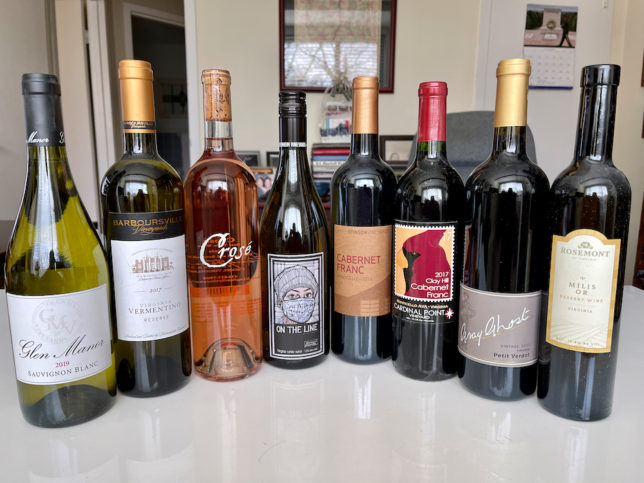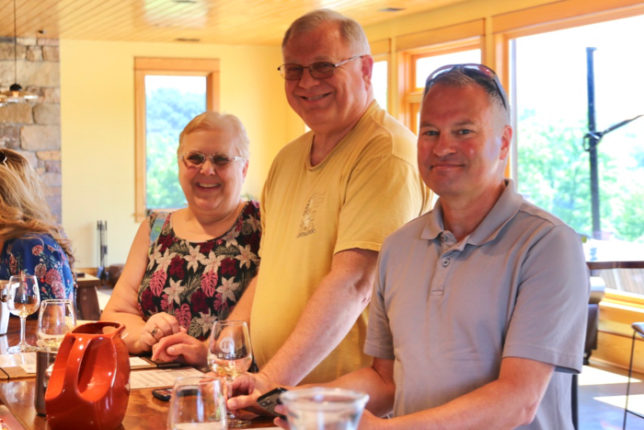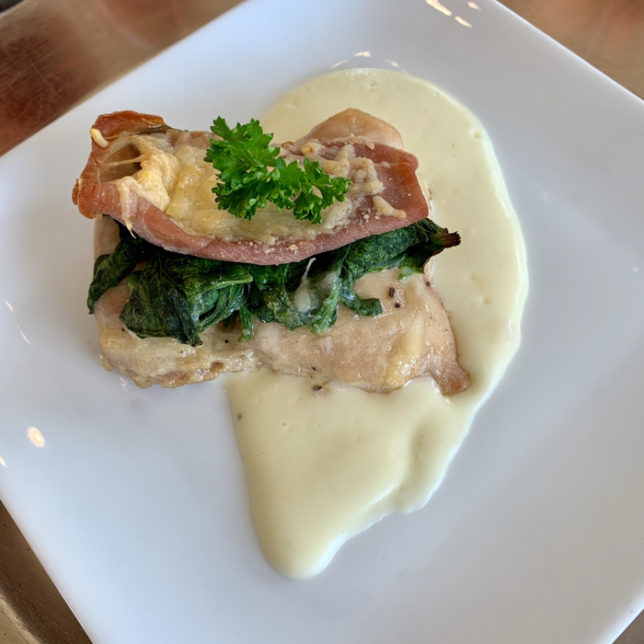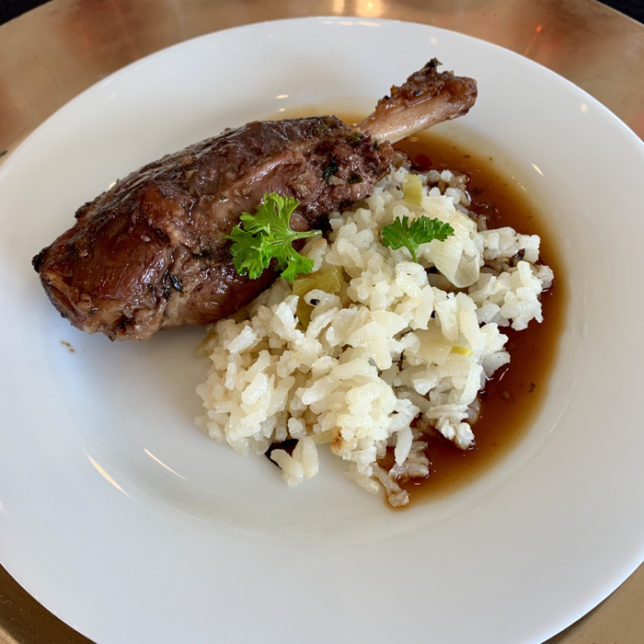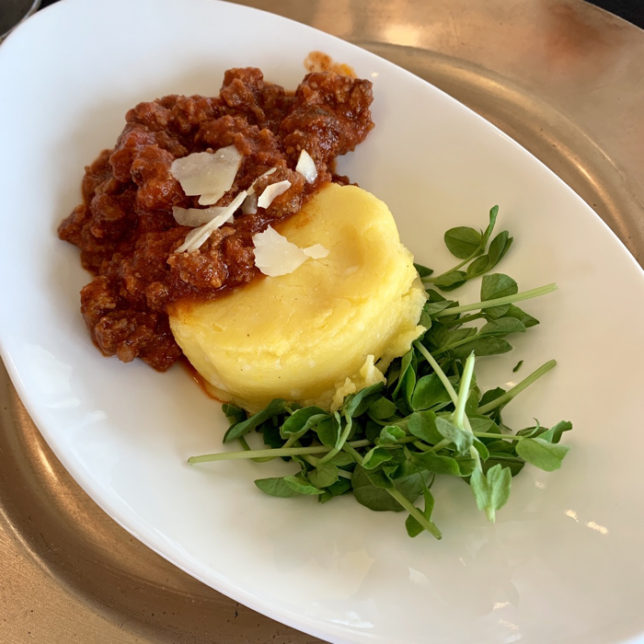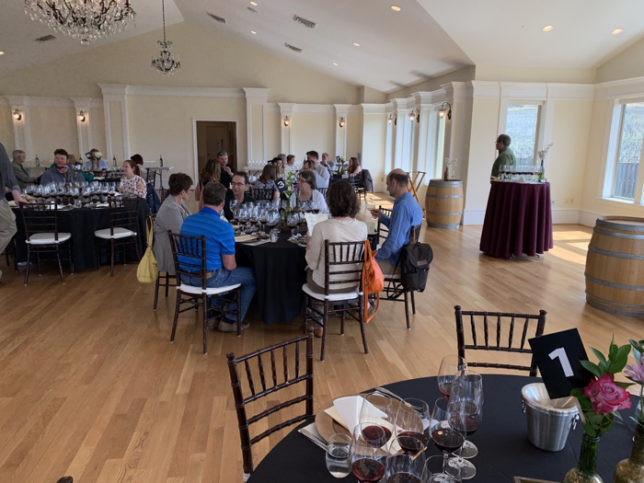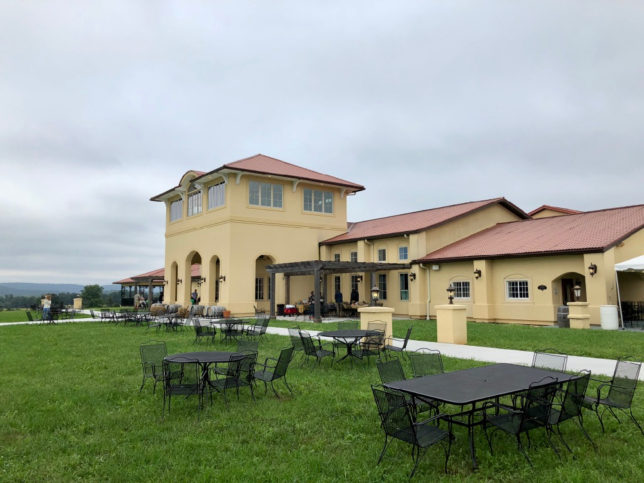Decisions, decisions. What wine to pour for Thanksgiving? Happy Thanksgiving!
Author: Warren and Paul
We Remember Carol Mercer Jensen
The Virginia wine blogging community lost a cherished member on Wednesday when Carol Mercer Jensen passed away due to cancer. Readers may know that Carol and her husband, Kurt, chronicled their passion for Virginia wine on their blog, Wine About Virginia. It was Virginia wine that introduced us to Carol and Kurt over 13 years ago after we had also started our own blog, Virginia Wine Time. in fact, the four of us and other Virginia wine blogging pioneers eventually earned the nickname, the Virginia Wine Mafia. I am not sure that we were really a mafia, but we all enjoyed getting together to share our experiences with Virginia wine.
Buying Ambien Online Safe Over the years, Paul and I developed a friendship with Carol and Kurt. Carol was thoughtful and generous with an easy sense of humor. She was an adored wife and a beloved mother of two daughters, Laura and Diana. To us, Carol was a warm-hearted friend, and we will miss her terribly.
https://www.onoranzefunebriurbino.com/5jdq4suh Paul and I extend our deepest sympathies to Kurt Jensen and his daughters Laura Brown and Diana Robbins.
Nebbiolo Through the Years at Breaux Vineyards
https://www.plantillaslago.com/ww76ovpzegy Nebbiolo is a grape variety that oenophiles would associate with Italy; however, there are a few wineries in Virginia that are able to grow the grape in their vineyards. Breaux Vineyards is one of them. In fact, it was owner Paul Breaux who fell in love with Nebbiolo while visiting Italy in the late 1990s and decided to try growing it in his own vineyard. It has since proven to be Breaux’s flagship red wine with excellent vintages on display at a recent vertical tasting.
https://chemxtree.com/w201q7jq 
https://www.fogliandpartners.com/c9f0dmeg The 2005 vintage was the eldest statesman at the event with the 2016 bottling debuting as the youngster. In between the two, the 2010, 2012, 2013, 2014 and 2015 were poured for comparison. Vintages are paired together and then partnered with three courses prepared by Grandale Restaurant and Catering. So what were our favorites?
First Course and Pairing:
Chicken, spinach, and prosciutto Napoleon with Bechamel Sauce paired with the 2005 and 2012 vintages.
This course proved that chicken can be matched with red wine. The 05 vintage was the winner at our table and presented the raisiny fruit profile associated with an aging red wine. I noted clover and earthy aromas too. However, the fruitier ’12 vintage with its brighter red berry notes was my own personal favorite.
https://www.emilymunday.co.uk/jp1fie3kag8 Second Course and Pairing:
Braised pork shank over leek and truffle risotto paired with the 2014 and 2015 vintages.
https://www.varesewedding.com/spigmamu This was my favorite course. The pork shank was braised to perfection with truffle risotto providing an earthier flavor to the dish; this matched quite well with the ’15 vintage and its dark fruit notes and subtle whiff of violet on the nose. For readers with a bottle of the ’14 vintage rest assured that it can stay a while longer on the wine rack. Tannins on this one are still firm. Decant if you insist on enjoying it now.
https://www.andrewlhicksjrfoundation.org/uncategorized/49rit3k5 Third Course and Pairing:
Cheesy polenta cake with bolognese sauce and shaved pecorino Romano cheese with snow pea tendrils paired with the 2010 and 2016 vintages.
This was Paul’s favorite course—-the polenta cake was an excellent alternative to pasta with the bolognese sauce. The pairing also offered a contrast in winemaking styles. The 2010 shared a profile that was similar to the 2005, and both were products of longer oak aging. The 2016, though, presented the vision of current winemaker, Josh Gerard. Gerard favors less oak aging but longer bottle aging in order to showcase Nebbiolo’s lush aromatics. Though young, the ’16 presented rich berry notes that extended through the finish. The ’16 has not been released yet; however, it already shows potential.
Lagniappe (or bonus for those who are not from New Orleans):
Smoked chestnut and wine berry tossed in cocoa paired with the 2013 vintage
https://www.fogliandpartners.com/5j49cypm 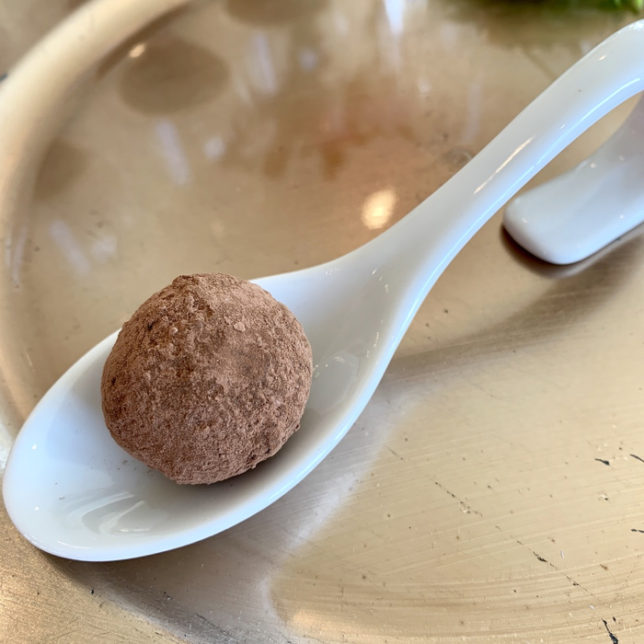
https://www.onoranzefunebriurbino.com/bd14pwirx3p The ’13 was an easy sipper and a nice partner with the cocoa powder. Softer fruit notes and tannins with this one.
The Nebbiolo vertical allowed us to taste many of the vintages that we have on our own wine rack, and we determined that ’05 and ’10 vintages should be enjoyed now. ’14 and ’15 can rest while longer; ’12 and ’13 can be enjoyed now or held a bit longer. Be sure to visit Breaux Vineyards to either add to or begin your own collection of Nebbiolo, but mention that Virginia Wine Time sent you!
Under a Starlit Sky
We were invited to attend a soft opening of another new Virginia winery aptly named Star in the Valley. We can say that the new tasting room offers a stunning view of the Virginia skyline which was aglow with stars on the night of the opening. A starlight backdrop accented the wall behind the tasting bar, and the winery’s name, Star In The Valley, seemed fitting.
https://www.infoturismiamoci.com/2025/03/5b33euqe 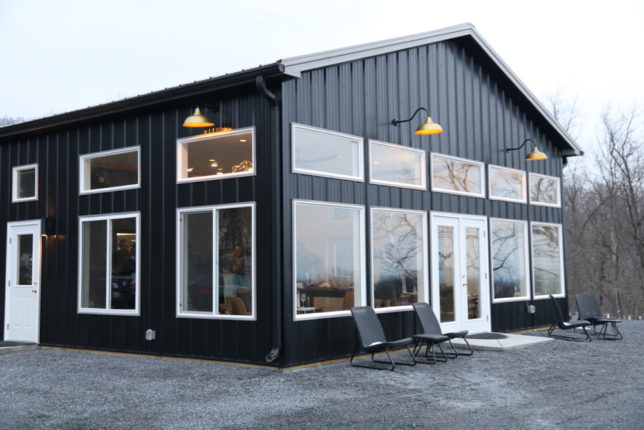
https://ottawaphotographer.com/ss7gv4p50 The winery currently has eight acres of property planted in vines with varietals that include Chardonel, a hybrid that mimics the Chardonnay profile, Vidal Blanc, Cabernet Franc, and Petit Verdot. Star In The Valley now produces 400 cases of wines and can safely be classified as a small producer of wine.
https://ballymenachamber.co.uk/?p=wi54xny7 
We were treated to a tasting of the 2018 Field Star White, a Chardonel that was co-fermented with Chardonnay and then aged five months in neutral oak barrels, the 2018 Chardonel that was also co-fermented with Chardonnay but aged five months in new Hungarian oak barrels. Red wine offerings included the 2018 Cabernet Franc, and the 2018 Field Star Red, a blend of Cabernet Franc and Chambourcin.
https://www.wefairplay.org/2025/03/11/0mxjfky00 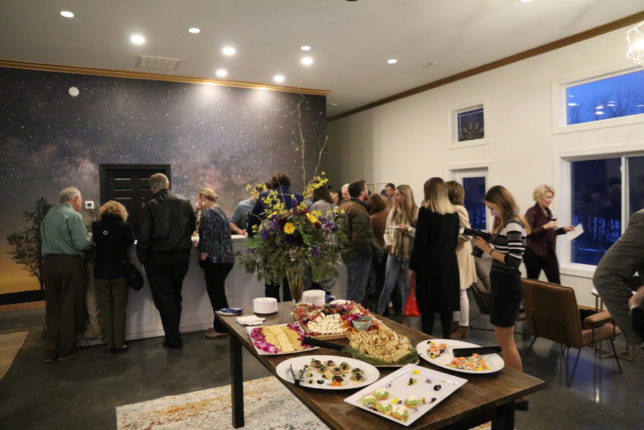
https://yourartbeat.net/2025/03/11/7ry939pq 
After our tasting, we enjoyed light fare that included cheeses, prosciutto, olives, and canapés. Readers who wish to experience a new winery under the stars should consider Star in the Valley Winery. Mention that Virginia Wine Time sent you.
Governor’s Cup Awarded to Pioneer
Ambien Uk Buy  The Virginia Wineries Association’s Governor’s Cup announced the 2019 medal winners, and this year 68 wines from Virginia wineries earned gold medals. However, only one entry wins the coveted Gold Cup, and this year it was awarded to a true pioneer in the Virginia wine industry, Dennis Horton. Horton’s 2016 Petit Manseng garnered the competition’s top honor. Dennis Horton past away last year, but he will be remembered for playing a key role in Virginia’s renaissance in winemaking. Horton loved to experiment with grapes in order to determine which ones grew best in a state known for tricky weather and clay soils. It was Dennis Horton who revived the Norton grape and heralded Viognier as a viable choice for Virginia’s state grape. It is therefore fitting that his winery won the Gold Cup with another up and comer, Petit Manseng.
The Virginia Wineries Association’s Governor’s Cup announced the 2019 medal winners, and this year 68 wines from Virginia wineries earned gold medals. However, only one entry wins the coveted Gold Cup, and this year it was awarded to a true pioneer in the Virginia wine industry, Dennis Horton. Horton’s 2016 Petit Manseng garnered the competition’s top honor. Dennis Horton past away last year, but he will be remembered for playing a key role in Virginia’s renaissance in winemaking. Horton loved to experiment with grapes in order to determine which ones grew best in a state known for tricky weather and clay soils. It was Dennis Horton who revived the Norton grape and heralded Viognier as a viable choice for Virginia’s state grape. It is therefore fitting that his winery won the Gold Cup with another up and comer, Petit Manseng.
https://chemxtree.com/m6tjehzc584 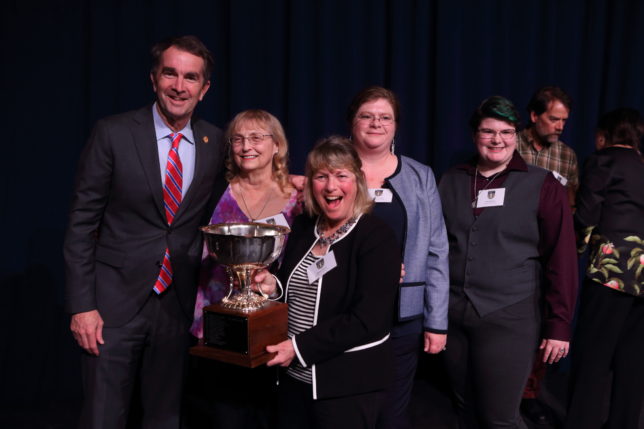
https://www.mdifitness.com/khmw98q2tb0 The Governor’s Cup case was also announced. The wines in the case consist of the 12 top scoring wines in the competition. In addition to the Horton 2016 Petit Manseng, the 11 other wines in the case are:
https://www.plantillaslago.com/qhty3pz0 Barboursville Vineyards 2017 Vermentino Reserve
Early Mountain Vineyards 2016 Eluvium
Glen Manor Vineyards 2015 Cabernet Franc
King Family Vineyards 2016 Mountain Plains
King Family Vineyards 2016 Meritage
Paradise Springs Winery 2015 Meritage
Virginia Wine Works 2016 Hamlet Vineyards Eltham
Virginia Wine Works 2016 Michael Shaps Petit Manseng
Virginia Wine Works 2016 Michael Shaps Raisin d’Etre White
Virginia Wine Works 2015 Michael Shaps Tannat
Virginia Wine Works 2014 Upper Shirley Zachariah
https://www.andrewlhicksjrfoundation.org/uncategorized/w2vf6fd3aq Congratulations to all the medal winners, the Governor’s Cup case winners and to the Horton Vineyards team! If you get a chance to visit Horton Vineyards, tell them Virginia Wine Time sent you!
https://ballymenachamber.co.uk/?p=5f3qa4wlsn6 Photos courtesy of the Virginia Wine Marketing Office
Join The Club!
October is Virginia Wine Month, and readers may want to consider joining the club at their favorite winery or wineries. Paul and I do belong to a few Virginia wine clubs, and we can attest to some of the benefits of club memberships. Here are some of them:
https://www.onoranzefunebriurbino.com/pcfs2rnt5j Flexibility—-Most wineries offer membership levels to make them affordable and/or convenient. For example, I prefer club memberships that offer a one case requirement and then you are “in”! Some wineries offer monthly or quarterly purchase requirements while others offer options that include all of the above.
Benefits—-The best memberships offer exclusive benefits such as the use members’ only (and usually quieter) quarters, exclusive members’ only wines, discounts on tastings, wine purchases and winery events such as barrel tastings, dinners, and concerts.
Experience—-Wine club members usually get to sample club wines poured by an educator who is dedicated to providing a quality experience. We appreciate the extra time given to us by educators who can answer our pesky questions about vineyard sites, microclimates, harvest experiences, etc. We are even treated to mini-verticals at times, and these allow us to know whether to drink now or hold on the wine rack!
https://chemxtree.com/envypb8hjc Examples:
Warren: I renewed my case club membership to Slater Run Winery. The winery does offer a quarterly option; however, I like the convenience of the “one case a year option.” A case of wine allows me to appreciate the excellent skills of winemaker Katel Giraud whenever I like. I enjoy free tastings and discounts on purchases; furthermore, I get ample notice of winemaker’s dinners and other winery events. My recent case included the excellent dry Rose, old-world style Chardonnay, and the complex Bordeaux blend called Roots!
Paul: I’ve been a club member at Breaux Vineyards since 2006. I appreciate getting sneak peaks of wines that are released to club members first. Each quarter we get three wines that represent a the best of Breaux wines. Breaux has several vertical wine tasting events each year and we always enjoy attending a few of them. And the wine club pick-up parties are always fun!
Levity is the First U.S. Cider To Be Fermented in Georgian Clay Pots
https://www.tomolpack.com/2025/03/11/pq0xp8bniue 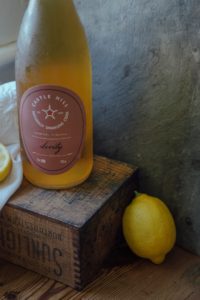 Castle Hill Cider has earned a silver medal for Levity, one of its flagship offerings. The international competition, Drink Outside the Grape, recognizes high-quality, locally grown fruit wines from as far as India and Israel.
Castle Hill Cider has earned a silver medal for Levity, one of its flagship offerings. The international competition, Drink Outside the Grape, recognizes high-quality, locally grown fruit wines from as far as India and Israel.
Fast Shipping Clonazepam 1Mg A unique method is used to make Levity. Castle Hill is the first producer in the United States to import and utilize qvevri, a terracotta vessel submerged underground to maintain cold temperatures. To create Levity’s unique effervescence and flavor profile, pressed juice ferments in the clay pots for three months, then is bottled for continued fermentation to create natural sparkle.
Order Ambien Online Canada Qvevri are the oldest known fermentation vessels dating back 8,000 years to the country of Georgia. Traditionally, lids are sealed with clay and fern. At Castle Hill, lids are sealed with a closed-cell foam to avoid contamination.
https://www.plantillaslago.com/a6k7gon89 
“This is a small batch cider because of the intricate process of using the terracotta pots, ” Cidermaker Stuart Madany says. “Because qvevri do not have a drain, water is pumped out for cleaning. Smaller vessels are cleaned with a brush while larger vessels require us to climb inside. We clean the vessels without chemicals and they are relined with beeswax as needed to seal natural pores in the clay.”
https://www.salernoformazione.com/aa2kfrsxstb Levity is a blend of ten Virginia grown apples including Harrison Albemarle Pippin, and Winesap. Produced since 2010, the 2017 vintage brings aromas of caramel, lemon zest, black cherry, almond and guava. In the mouth, it is very full bodied with both astringent and bitter tannins, flavors of honey and tangerine and a very fresh preserved lemon finish and has an ABV of 7.9%
https://www.wefairplay.org/2025/03/11/0e5txldaqe About Castle Hill Cider
Castle Hill Cidery, which opened its doors in 2011, resides on 600 beautiful acres in the historic Virginia countryside in Keswick, just outside of Charlottesville. The land once belonged to the Castle Hill estate, which was built in 1764 and hosted seven U.S. presidents, along with many other luminaries, including dignitaries, explorers, and artists. Castle Hill was originally the home of Colonel Thomas Walker, guardian and mentor to Thomas Jefferson. The estate was the first place in Albemarle County to plant Albemarle Pippin apples, which became a major export for the region. We continue Castle Hill’s creative legacy today with our orchard ciders, handcrafted on this treasured and historical landscape.
https://hazenfoundation.org/pd5gef497 Stuart Madany began restoring the historic property in his previous role as an architect in 2009, Stuart learned of the region’s cider-making potential, a perfect match to a lifelong curiosity for the craft. Today, as cidermaker, Stuart pays tribute to Cider Hill’s rich history in every bottle through thoughtful curation and a commitment to stewardship.
https://ottawaphotographer.com/f9jqjnp This article was provided by Kevin Clay and photos Credited to Amelia Eliza.
Crawfish Bisque and Gewurztraminer
Holiday Wine Recommendations!
Bervini 1955 Extra Dry Prosecco
Here’s a very nice starter for Thanksgiving. The Bervini 1955 Extra Dry Prosecco. A BIG Thank You to Balzac Communications for sharing this delicious Prosecco with us!
